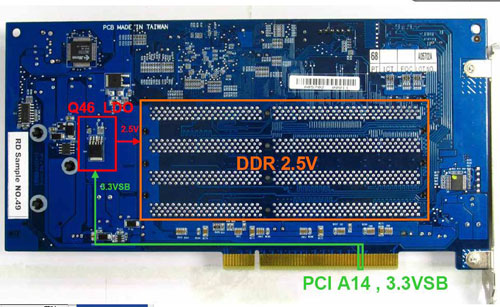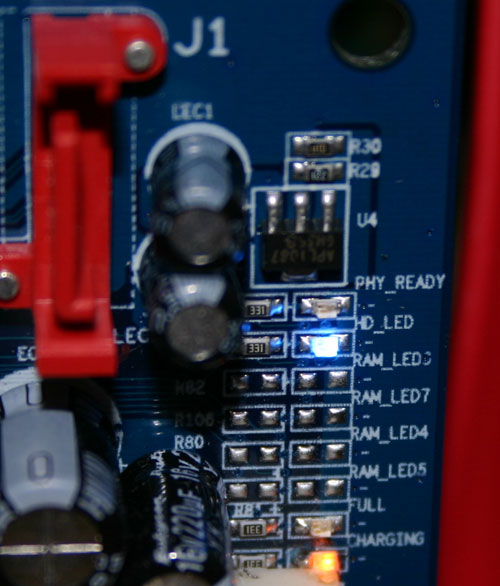Gigabyte's i-RAM: Affordable Solid State Storage
by Anand Lal Shimpi on July 25, 2005 3:50 PM EST- Posted in
- Storage
i-RAM's Limitations
Since your data is stored on a volatile medium with the i-RAM, a loss of power could mean that everything stored on the card would be erased with no hopes for recovery. While a lot of users may keep their computers on 24/7, there are always occasional power outages that would spell certain doom for i-RAM owners. In order to combat this possibility, Gigabyte outfitted the i-RAM with its own rechargeable battery pack.
There are only three conditions where the i-RAM runs off of battery power:
1) When the i-RAM is unplugged from the PCI slot;For whatever reason, unplugging the i-RAM from the PCI slot causes its power consumption to go up considerably, and will actually drain its battery a lot quicker than the specified 16 hours. We originally did this to test how long the i-RAM would last on battery power, but then were later told by Gigabyte not to do this because it puts the i-RAM in a state of accelerated battery consumption.
2) When the power cable is unplugged from your power supply (or the power supply is disconnected from your motherboard; and
3) When the power button on your power supply is turned off.
For the most part, the i-RAM will always be powered. Your data is only at risk if you have a long-term power outage or you physically remove the i-RAM card.
If you run out of battery power, you will lose all data and the i-RAM will stop appearing as a drive letter in Windows as soon as you power it back up. You'll have to re-create the partition data and copy/install all of your files and programs over again.
The card features four LEDs that indicate its status: PHY_READY, HD_LED, Full and Charging.











133 Comments
View All Comments
ceefka - Tuesday, July 26, 2005 - link
That and/or having the possibility to install very large amounts of RAM (like 32GB) on your motherboard and BIOS settings to decide how much of that is non-volatile.I have a feeling this is a transitional product that while being a very nice add on to your current system, will become obsolete in 4 to 5 years. If I had to capture loads of high sampled audio (96/24), I'd want one now, though.
Furen - Monday, July 25, 2005 - link
I was expecting something closer to the $50 price mentioned at computex... It would have been a nice device to tinker around with, but at that price (plus the price of ram) I dont think most of us will get it.weazel1 - Sunday, November 4, 2012 - link
why they have to waste pci bus speeds and run though a sata chip beyound me it should directly conect to the pci bus have its own bois and run as full fleached ram or as normal ram with a redirect to being a hdd heack u have ram disk software idea the drive is pretty useless as permenment storage why no1 could see this i do not know